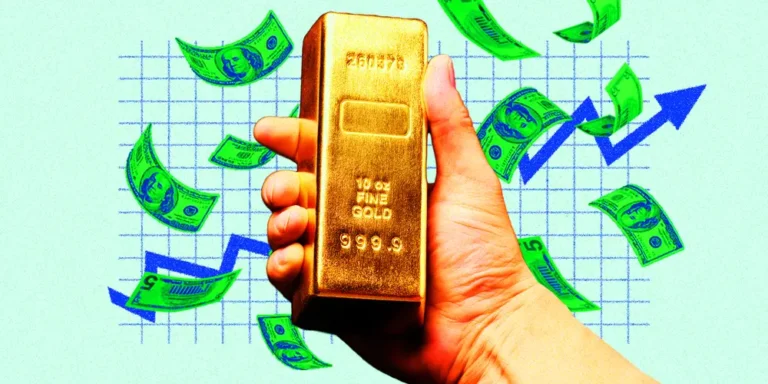Capitalize on once-in-a-generation opportunities in the bond market by making these 5 moves now, according to 6 leading fixed income strategists

- Bonds have disappointed again in 2023, but performance may improve significantly in the near future.
- The Federal Reserve will stop raising interest rates soon, assuming it hasn’t already.
- Here’s how to invest in fixed income right now, according to six bond market experts.
Even though bonds are showing few signs of life, fixed income may have the best outlook of any asset class right now.
The greatest threat to bonds is the same one that stocks and the economy face: rising interest rates. Tight financial conditions reduce the value of fixed income investments while increasing yields, which move inversely to bond prices. The 10-year US Treasury Note yields 4.8%, up from 3.88% at the start of 2023 and significantly higher than the pandemic low of around 0.5%.
Six leading fixed income investors, on the other hand, are confident that the pain will not last much longer.
“We think it’s a tremendous opportunity, and probably something that we haven’t seen in quite some time,” Jonathan Mondillo, the head of North American fixed income and municipal bonds at Scotland-based investment firm Abrdn, told Insider in a recent interview.
The federal funds rate is expected to peak soon, assuming it hasn’t already, opening up a buying window that some multi-decade market veterans say hasn’t been seen in generations.
“For the first time in 20 years, you’ve got reasonable valuations across bond markets where you’ve got high yields and high real yields,” Bob Michele, head of JPMorgan Asset Management’s global fixed income division, recently told Insider.
“I’ve been doing this since 1981, so I’ve seen a decade of double-digit bond yields with disinflation,” Michele continued. I don’t think we’re there yet, but I think we’re in a situation where bonds are a good buy.”
Economic uncertainty is high, but rate hikes appear to be nearing an end.
There is no overwhelming consensus among strategists, including the half-dozen bond market experts interviewed for this story, about a recession. Most economists agree, however, that the US economy will lose steam even if it does not contract.
Slower economic growth would allow the Fed to stop raising interest rates soon, even if it does not cut them for some time. Bonds should find a floor when interest rates finally peak.
“We think somewhere around year-end, into the first quarter, we’ll be in recession,” Michele said in an interview. “This tells us that we’re in a buy zone for fixed income, with yields peaking in this area.” Could they possibly go a little higher? Maybe. But now is as good a time as any to buy.”
Rates, according to Michele, should not be raised in a weaker economy with falling price growth. He believes bond prices are nearing a bottom and would be surprised if the 10-year Treasury yield exceeded the federal funds rate, which is currently at 5.25%.
Michele is a contrarian because she is betting against more hikes. Most fixed income strategists with whom Insider spoke believe the US Federal Reserve will raise interest rates at least once more.
“Markets are finally listening to what the Federal Reserve — certainly in the US — has been saying in terms of wanting to keep interest rates higher for longer,” BCA Research’s chief global fixed income strategist Robert Robis told Insider.
Monetary policy is months behind, according to Robis, so the Fed may not need to raise already-restrictive rates again. He now expects a downturn, barring a surprise dovish pivot.
“We expect that the recession story is going to be delayed — not canceled,” he said. He believes that spending will slow as excess savings amassed during the pandemic deplete.
Rockefeller Asset Management’s director of fixed income, Alex Petrone, agreed that it’s too early to rule out a recession.
“Bond market participants are probably a bit too optimistic that the Fed has somehow won this battle unscathed,” he said. “And we’ve seen in the past that these soft landing calls tend to peak right around the time the market reaches peak rates.” This time may be no exception.”
Those who are upbeat about the economy frequently point to the labor market. In September, job growth exceeded expectations, and the unemployment rate remains low at 3.8%. Readings like that give the Fed permission to remain hawkish without necessarily raising rates, according to Petrone. She is undecided about additional rate hikes, but believes a long pause is possible.
“You saw, I’m sure, Daly’s comments yesterday that the recent rate move is the equivalent of one Fed hike,” Petrone said, referring to San Francisco Fed president Mary Daly’s comments. “That possibly gives some opportunity to take a step back and allow monetary policy to continue to work through the system.”
Even if interest rates do not rise further, strategists believe that bond yields will rise as long as they remain restrictive.
“Don’t forget: It’s not necessarily the level of rates at that point and whether they peak, but how long they keep those rates at that level,” said David Schiffman, an Aquila Investment Management portfolio manager specializing in high-yield bond investing.
However, higher-for-a-longer-period rates may already be priced into bonds. The fixed income heads agreed that yields would not rise much further, implying that the best days of fixed income appear to be ahead.
“We don’t see why rates will start testing higher levels,” said Roger Aliaga-Diaz, global head of portfolio construction for Vanguard’s Investment Strategy Group. “The peak in central bank rates also provides an anchor, if you will, for the peak in long-term bond rates.”
5 ways to invest in bonds while fear reigns supreme
Few market participants appear to be taking advantage of the highest bond yields since before the financial crisis, based on how yields have risen.
“Investors are still wary,” Aliaga-Diaz said. “Typically, investors seek out performance. We’ve seen this year after year, and it’s one of the behavioral biases we try to combat as we try to encourage more long-term thinking in investing.”
Bonds could take off once they gain positive momentum, according to strategists.
“Investors are waiting to see if all the proverbial pain has subsided,” he said. “And I think that as yields reset higher, you’re going to start to see investors move into either longer duration, the intermediate portion of the curve, but certainly fixed income in general.”
Timing is important for maximizing returns, but fixed income experts say it’s difficult because the Fed’s policy decisions are unpredictable. While traders would prefer to buy bonds as rates rise, Michele believes that adding at least some exposure before the market reprices is more important.
“We know the market’s structurally cheap — it can run higher,” Michele went on to say. “And before we add more duration and interest rate sensitivity to our portfolio, we’re asking ourselves, ‘How greedy do we want to be?'” Do we want to see if we can get to 5.25%? “Are you going to start buying now because the real yields are so high?”
According to Michele, the most straightforward way to gain exposure to fixed income is through a general bond fund that includes Treasuries, mortgage-backed securities, and corporate coupons. Those with higher incomes should look into tax-exempt municipal bond funds, he says.
Mondillo, an Abrdn municipal bond analyst, agreed that the subgroup is underserved. In an uncertain environment, a typical 6% yield on investment-grade bonds issued by states, cities, and counties stands out, he says. Ordinary investors can diversify their muni holdings by investing in mutual funds or separately managed accounts (SMAs).
“When you look at fundamentals within the asset class, which by and large are at or near peak levels, I think it looks extremely attractive,” Mondillo said of municipal bonds. “Great income-generating asset as well as strong fundamentals headed into, if we do get into an economic slowdown, which could insulate investors to some of the fallout from that economic slowdown.”
Diversification is the best approach in fixed income, according to Aliaga-Diaz. Spreads on investment grade bonds are low, and junk bonds are a risky bet in the event of a recession. The strategist also does not want to bet everything on government bonds if growth remains strong and rate hikes continue. Spreading assets across categories and durations, he believes, is a prudent way to reduce risk.
Robis of BCA Research agrees that diversifying across duration is a good way to hedge against the Fed’s rate decisions, but he believes that in this weaker economy, bond investors should focus on higher-quality mortgage-backed securities and Treasuries. Credit spreads are tight, he noted, implying that corporate bonds do not provide a sufficient reward for the increased default risk they entail.
Petrone agreed, saying that neither investment-grade corporate bonds nor their high-yield counterparts are appealing enough to bite on. She recommends playing fixed income by purchasing Treasuries and municipal coupons at both the long and short ends of the curve.
Despite tighter-than-usual credit spreads and elevated recession risk, Schiffman, an Aquila high-yield specialist, believes lower-quality bonds should not be written off.
High-yield bonds can yield more than 9%, but they face stiff competition from Treasuries, which yield around 5% and are virtually risk-free. However, Schiffman believes that having that extra yield at a low duration will be useful if interest rates rise further.
“Nine-percent starting yield gives you an awful lot of cushion to absorb rates,” said Schiffman. “If we do see rates start to tick higher, or if in fact we do see credit spreads start to widen out, you need prices to come down a pretty decent amount in order for you to generate negative total returns at that point.”
While high-yield bonds can be a good investment, Schiffman advised those interested in avoiding higher-risk CCC coupons in favor of less-risky Bs and BBs.
“It does look like it’s still a pretty attractive asset class,” Schiffman told reporters. “However, just straight-out buying the index doesn’t allow you to avoid some of the landmines that we might see in the lower-rated credits in the CCC sector of the market, which obviously, we could see default rates tick up if the economy starts to roll over from the effects of higher rates.”






